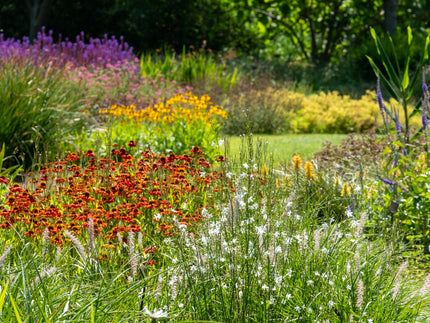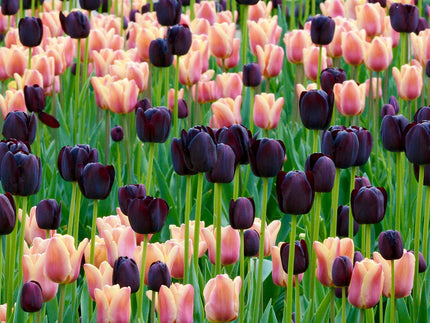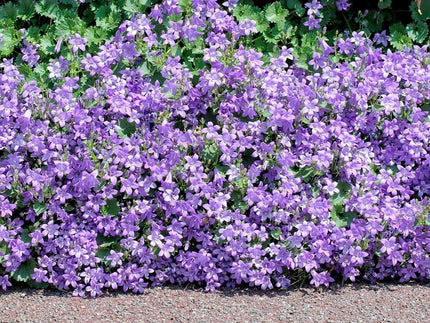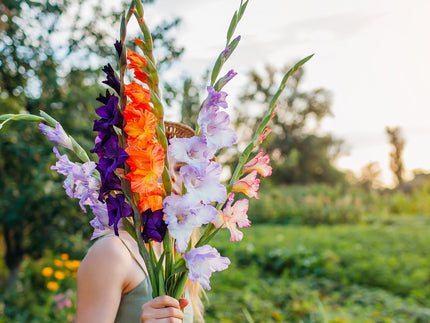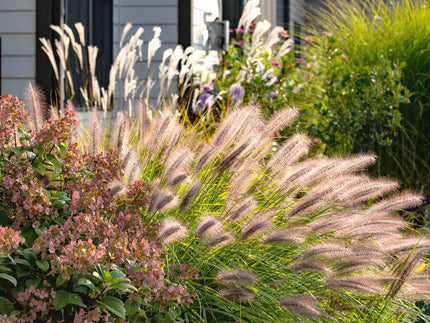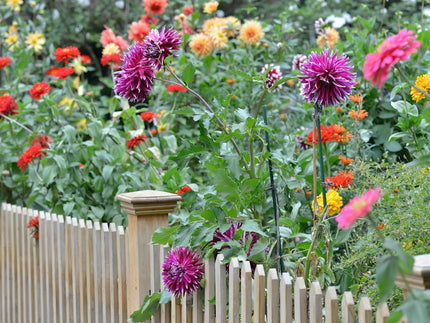Primula
Primula are a large and varied genus of hardy herbaceous perennials, with over 400 different species in total, and hundreds more cultivated hybrids. Ranging from familiar Primroses and Polyanthus to more specialist species like Primula vialii, there is one to suit every garden. They all share a compact habit, forming neat rosettes of foliage with prominent blooms that attract pollinating insects to a feast of nectar.
Primula are a versatile group of plants but generally prefer a lightly shaded spot, in damp, humus-rich soil. In sunnier spots they cope well, provided that the soil remains moist.
These undemanding perennials are indispensable for woodland plantings, cottage gardens, boggy pond edges, and damp borders. Plant them with spring bulbs, or on their own. They bring a delightful pop of colour for underplanting trees and shrubs, or nestling among ferns, hostas and other leafy shade-lovers.
How to plant
— Primula are shipped in autumn at the perfect time for planting. They will need water and light after their journey, so it's essential plant soon after delivery (ideally within a week). Primula is supplied as a 9cm root ball plant, like a potted plant with soil held together by the roots. If you can't plant it immediately, place the root ball in a shallow dish of water so it can remain hydrated in the meantime.
— Root ball plants can in some cases be planted directly into a clear space in borders, this depends on soil type, moisture levels and whether there are neighbouring plants which will compete, or a risk of pests damage. Root ball Primula can settle in well to rich, crumbly soil and they will need moist soil. If you're planting directly into a border, avoid any space which is close to more established plants which could over-crowd them during the growing season.
— If your soil is a little more challenging or space isn't available to plant straight away, you should pot up your rootball plant and grow it on in a pot until it's more established. Pot up on arrival into 15-20cm pots with multipurpose compost. Grow-on in a sheltered, partially shaded part of the garden until they are a little more established before transplanting into the ground. They will be ready to transfer into the garden when they look like they're starting to outgrow their temporary pots, the plant should come out of the pot with the compost held intact by the roots.
— Plant so that the root system/root ball is fully submerged in the soil, leaving the top growth exposed above the soil surface. If your plant doesn't have much top growth, it should have buds at the crown of the root system and they should be level with the soil surface after planting. If planting root ball plants directly into a border, choose a partially shaded position with rich, cultivated soil and space the plants 15-20cm apart if planting in groups. Add multipurpose compost to each planting hole.
— Water-in after planting and continue to water regularly whenever the soil feels dry below around 3-5cm from the surface. There is no need to water if the soil feels damp already. You should water regularly, particularly in the first growing season during spring and summer while the plant is settling in. They are not drought tolerant plants and will wilt during summer if the soil becomes too dry.
— When transplanting potted Primula into borders, choose a position in light or dappled shade, in a moist, well-drained soil that is rich in organic matter. They can tolerate a sunnier spot providing the soil remains damp.
Aftercare:
— Primulas are deciduous and their foliage will naturally die back in late autumn. New growth will emerge in spring.
— Deadhead faded blooms from the base of the stem after flowering.
— This perennial is fully hardy and does not require winter protection once it is well established. However, plants potted in autumn will benefit from some shelter from heavy winter rainfall in their first year.
— Established clumps can be divided in early spring if they become overcrowded.





















































































































































































































